

I go to class at the park. I show the other dogs how to do stuff.

1 Place a treat in a bucket but don’t let your dog know that it is there. Put him in a sit-stay.
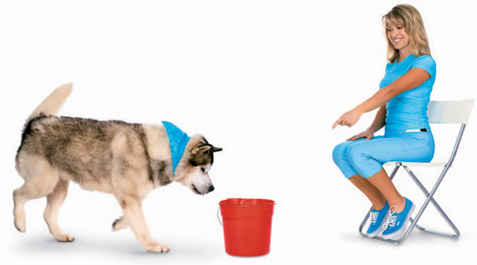
2 Point to the bucket and tell your dog, “Go!” Let him find and eat the treat. Repeat this exercise as many times as it takes until your dog goes quickly and directly to the bucket.
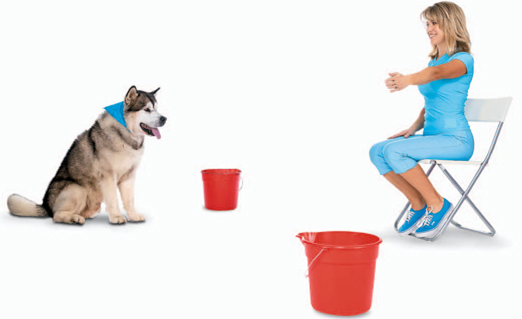
3 Set out two buckets, one on either side of you. Only one bucket will have a treat. Point to the loaded bucket and cue, “Go!”
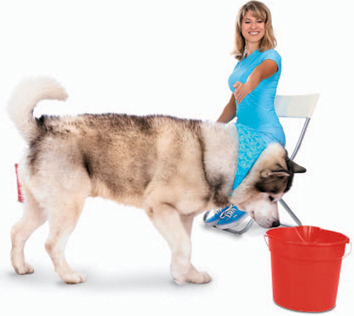
4 If your dog heads to the wrong bucket, stop him and start the game again. Do not allow him to follow through. If he goes to the correct bucket, he gets the treat!
TIP:
Your dog may surprise you and do better than you think! If your dog is having trouble holding his sit-stay, have a friend hold your dog. The friend should say and do as little as possible, to avoid influencing your dog.
EQUIPMENT:
Use two identical buckets or boxes large enough that your dog can easily insert his head and retrieve the treat.


1 Affix your target mat to the top of a short stool. Hold a treat to your dog’s nose, and move it slowly above the stool. As soon as your dog steps on the stool, say, “Good!” and give him the treat.
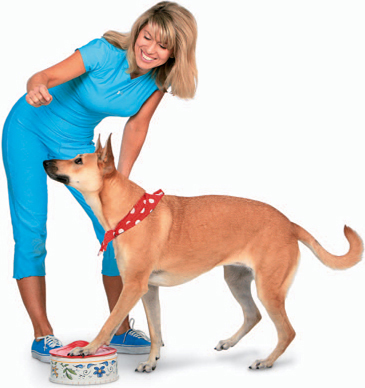
2 Next, affix the target mat to a slightly smaller and shorter object, such as an upside-down dog bowl. Say, “Target!” and lure him to step on it. Always give your dog his reward while his paws are on the mat and not after they’ve come off.
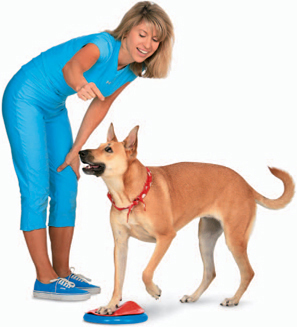
3 Affix the target mat to a shorter object, such as a flying disc. If at any point your dog seems confused, go back to a previous step.
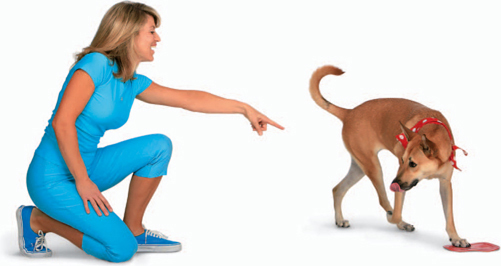
4 Finally, lay the target mat directly on the floor. By this point you should be able to send your dog to the target instead of directly luring him.
TIP:
While you may be tempted to skip a few steps and rush to put the target mat on the ground, you will find quicker success by progressing through incremental height levels of the target. The levels go quickly, and you may be able to progress through them with a few repetitions of each.
EQUIPMENT:
Make your own target mat from a metal jar lid, a carpet sample, a drink coaster, or whatever you wish. Very flat items or metal items work best, as your dog won’t be tempted to pick them up in his mouth.

Sometimes I want to go out. But then I change my mind.
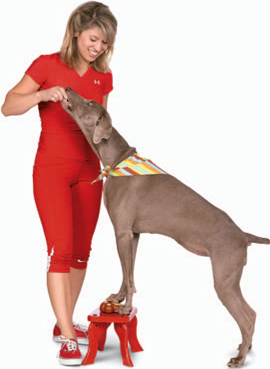
1 Securely tape your doggie doorbell to a short stool. Use a treat to lure your dog to step onto the stool. When he does, say, “Good!” and give him the treat. If he happens to step on the doorbell itself and make it chime, give him three treats and excited praise!
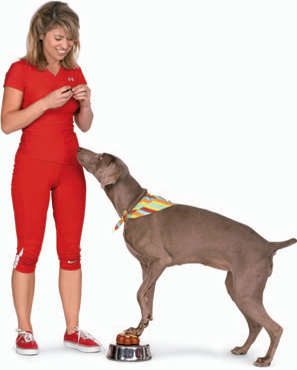
2 Next, tape the doggie doorbell to a smaller object, such as an upside-down dog bowl. Stand opposite from your dog, with the doorbell between you. Say, “Doorbell!” and try to get him to step on it. Give him a treat if he touches the doorbell (even if it doesn’t actually chime).
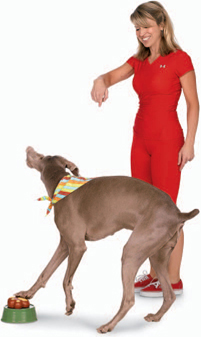
3 Tape the doggie doorbell to an even smaller object. With such a small object, your dog will be making the doorbell chime almost every time he steps on it. Reward him every time you hear the chime.
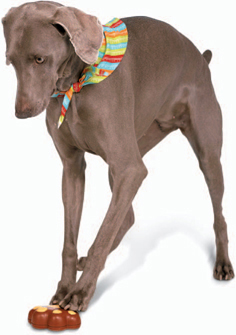
4 Finally, affix the doorbell directly to the floor. Your dog may try to scratch at the doorbell, so it will need to be secured to the floor.
TIP:
Once your dog gets the hang of stepping on the doorbell, have him step on it before opening the door for him. He’ll soon get the idea!
EQUIPMENT:
Electronic doggie doorbells are battery operated and composed of the button component that your dog steps on, and a small, wireless speaker. The speaker can be placed up to about 40 feet (12 m) from the button.

I have a squeak toy and it’s my favorite. Sometimes Dad says, “Enough already” and puts it in the closet.
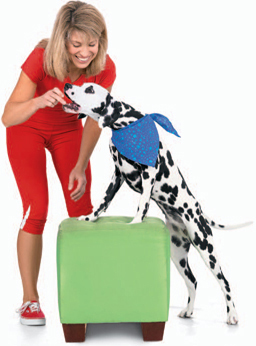
1 Get your dog interested in a treat and slowly lift it up over the pedestal. Your dog will put his paws on the pedestal, trying to reach the treat. When he does, let him nibble the treat in your hand.
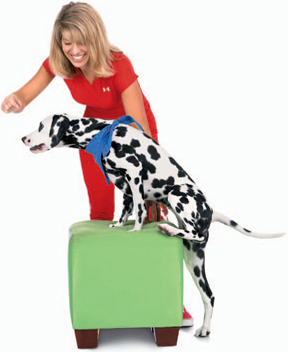
2 Now say, “Step up” and continue to draw the treat farther across the pedestal, so that your dog has to climb on top to reach it. If your dog keeps circling the pedestal, give him an occasional treat for just putting his front paws up so that he doesn’t become discouraged and walk away.
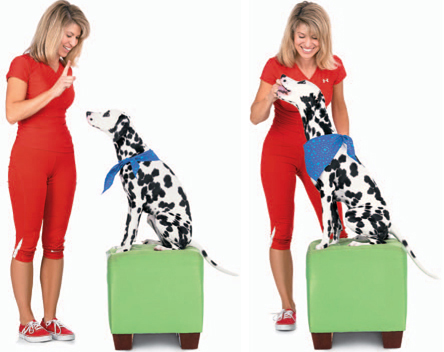
3 While your dog is on the pedestal, tell him to “stay” and keep giving him praise and treats while he remains up there. If he knows he will get occasional, random treats, he will be motivated to stay on his pedestal for longer and longer periods of time.
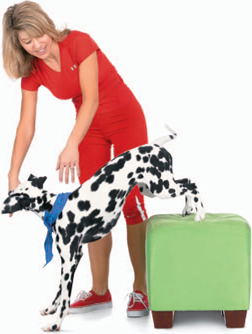
4 Your dog should stay on his pedestal until given the release word, “off.” If he comes off prematurely, have him get back on (try first to get him on without a treat, but use a treat if you must.)
TIP:
A key training strategy is to reward your dog when he gets ON the pedestal, but to never reward him for getting OFF the pedestal (even if you told him to get off).
EQUIPMENT:
A pedestal should be raised and sturdy and should have a nonslip surface. Common pedestals are an upside-down horse water bucket, a raised dog bed, the top half of a plastic dog crate, a plyometric box, and an agility pause table.
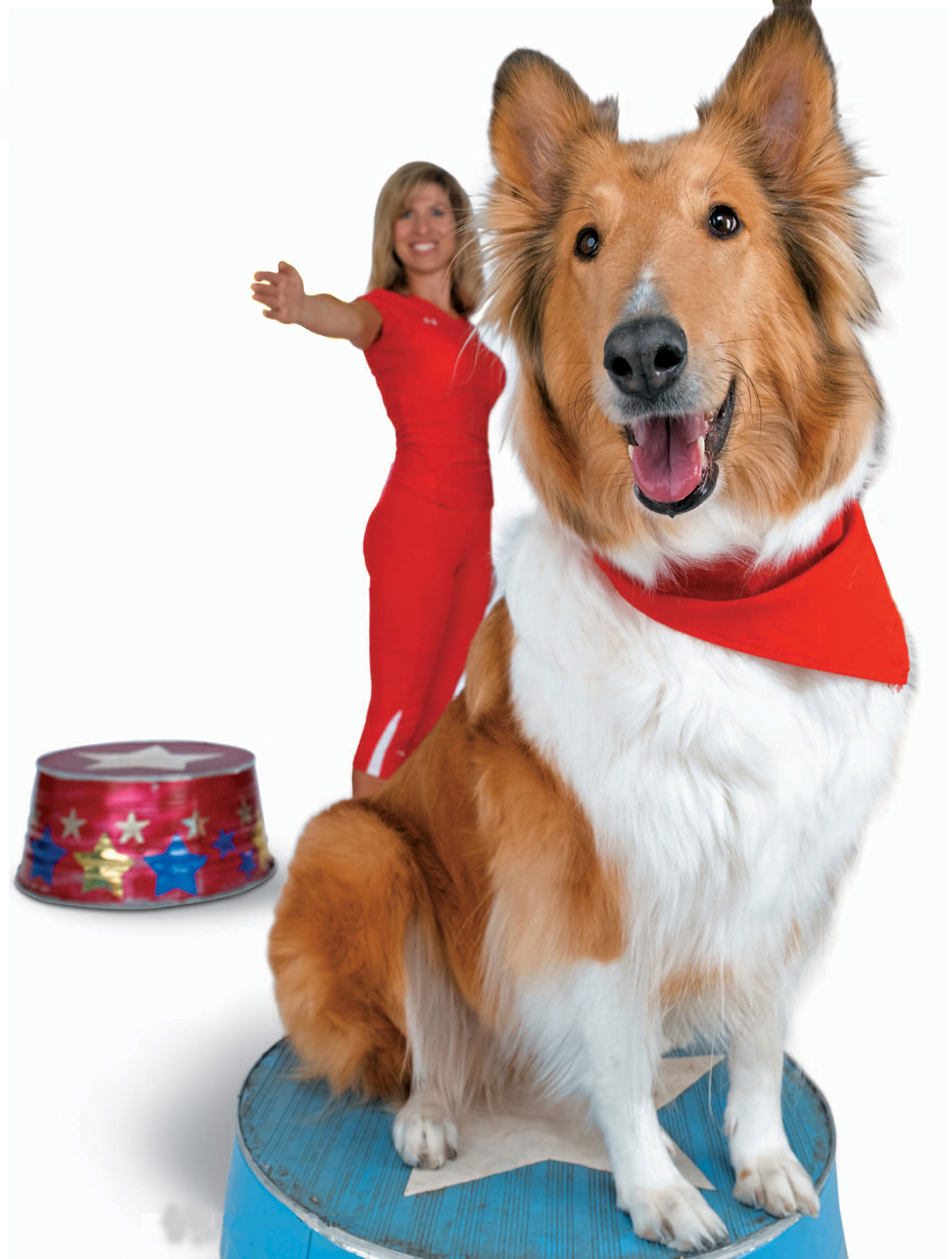
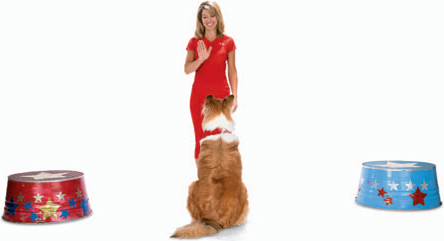
1 First, teach your dog to get on a Pedestal (page 136). Put your dog in a sit-stay, with a platform on either side of him and slightly forward of where he is sitting (as your dog will naturally want to move forward, toward you, in addition to going left or right).
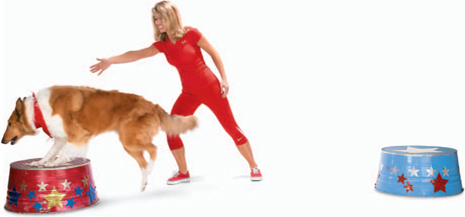
2 Move slowly and deliberately. Extend your arm first and then say, “Step up” and lunge toward one platform. Be sure to give the arm signal a second before the lunge and verbal cue.
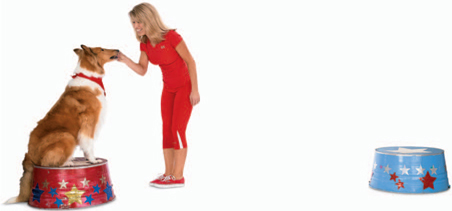
3 Walk forward and reward your dog while he is still on the platform. After a few seconds say, “Off,” bring your dog back to the center, and try casting your dog to the other platform.
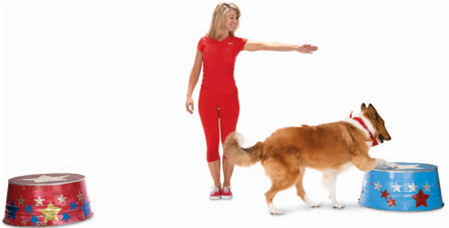
4 As your dog improves, you will no longer need to lunge toward the platform, and your dog will go simply based on your arm signal. If your dog heads to the wrong platform, stop him with your voice before he gets there. Set him back in the center and try again.
TIP:
Start with the platforms fairly close together and build up distance. After your dog has mastered left and right casting, add two more platforms and teach him to “come” and “go.”
EQUIPMENT:
Use two identical raised platforms. Wooden platforms raised about 8 inches (20 cm) off the ground are commonly used in retrieving training.
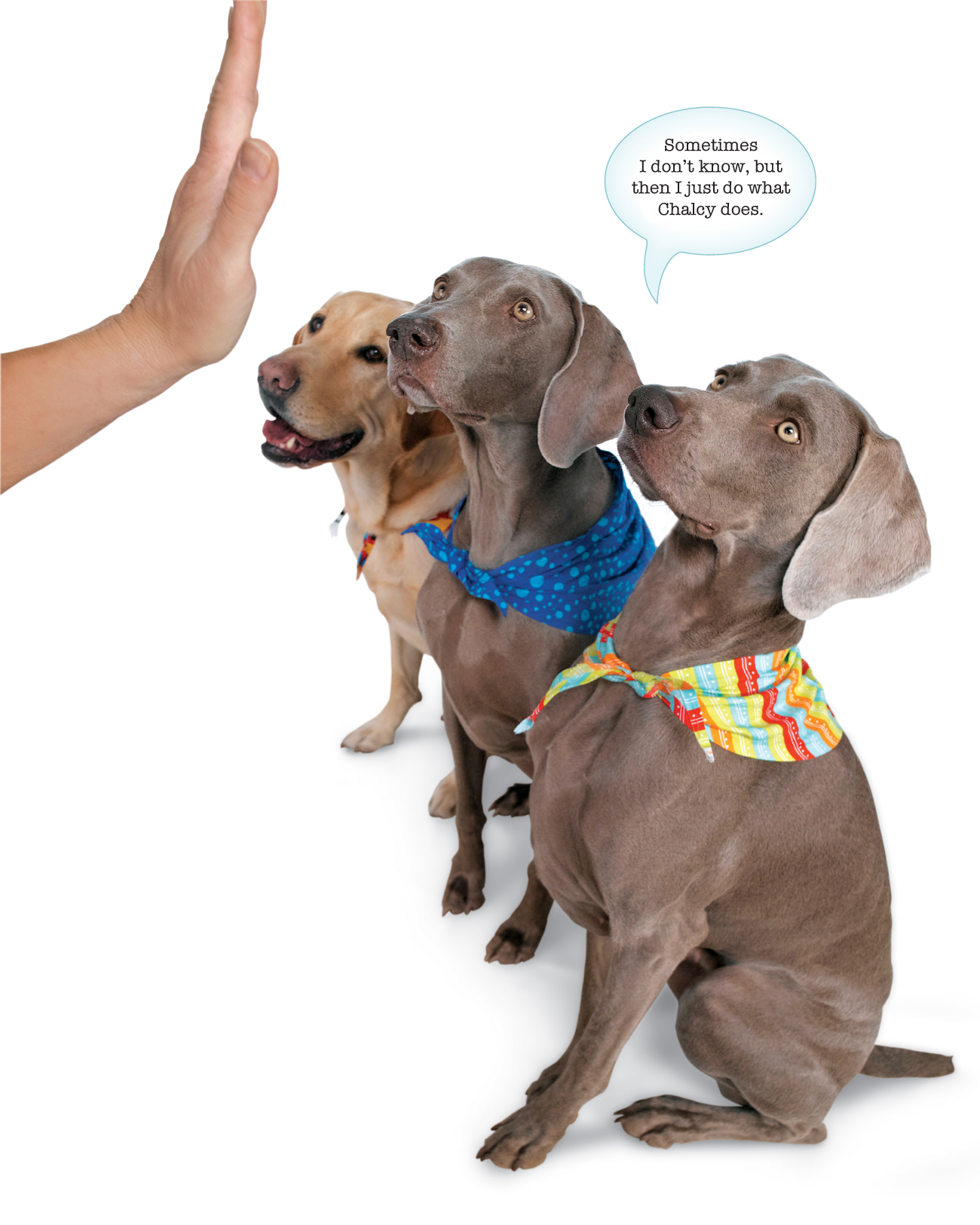
Sometimes I don’t know, but then I just do what Chalcy does.
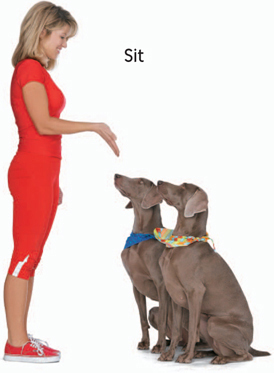
1 Hand signals are derived from the luring motion we made when initially teaching the behavior. The “sit” hand signal looks like the motion of luring the dog’s head up.
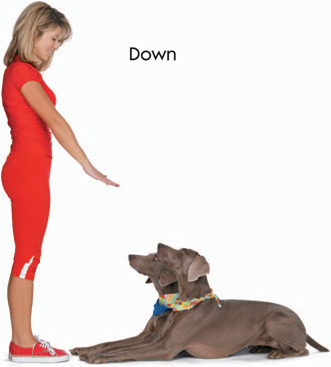
2 Start with a behavior that your dog already knows. Do the hand signal, wait one second, and then say your verbal cue. Reward your dog for doing the behavior.
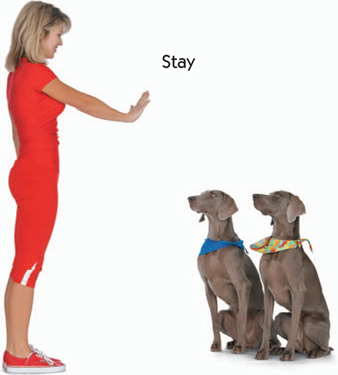
3 Your dog wants her treat as quickly as possible. She will learn that your hand signal is always followed by your verbal cue. She will learn to perform the behavior already at your hand signal in order to get her treat more quickly.
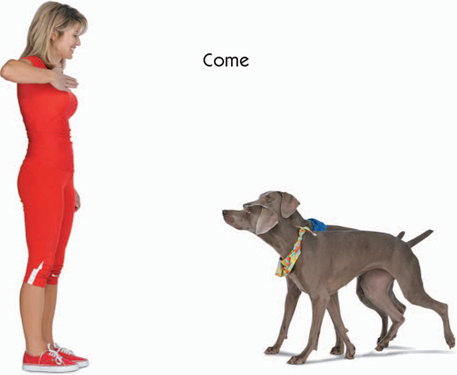
4 Hold your hand and arm rigid and make your movements clean and precise.
TIP:
Dogs respond extremely well to hand signals. In fact, once your dog understands a hand signal, she will respond to your signal more readily than your verbal cue. If, for example, you say, “Sit” but give the hand signal for “down,” your dog will probably lie down.


1 Set up a barrel or cone for your dog to go around. Position a fence or small barrier leading up to it. Use a treat to lure your dog down the length of the fence, around the cone, and back up the other side of the fence.
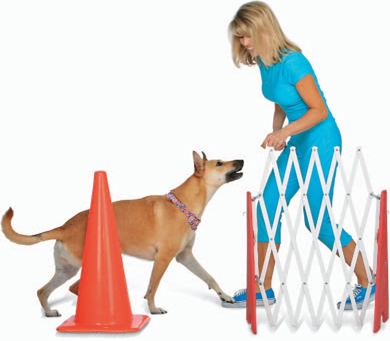
2 Move the fence slightly away from the cone and repeat this exercise. Say, “Go around,” and stop your body a little before the cone, so your dog has to do that last part by himself.
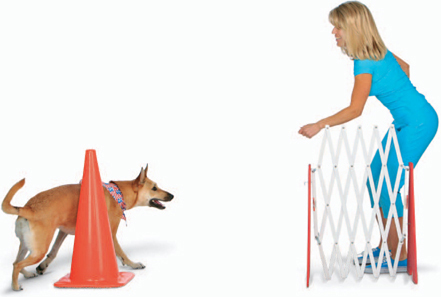
3 Move the fence even farther from the cone. Once your dog has circled the cone, take a step back, so your dog has a little farther to run to get back to you.
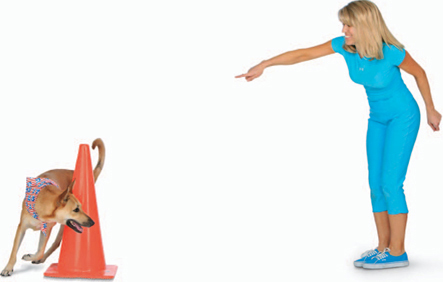
4 Finally, remove the fence altogether. Send your dog with an enthusiastic gesture of your arm and the cue, “Go around!” If your dog is not successful, sometimes all it takes is a small bit of fence to remind him what to do.
TIP:
If your dog is tagging the cone with his paws instead of circling it, try using a barrel or metal trash can instead.
EQUIPMENT:
You need not use an actual barrel to teach this skill. Use any item that is stable and taller than your dog’s head, such as a trash can or traffic cone.